Volunteer with TNC in Florida
Achieving our mission would not be possible without our volunteers. We invite you to turn your passion into action by volunteering at our preserves in Florida.
Volunteer Stories from TNC's Center for Conservation Initiatives
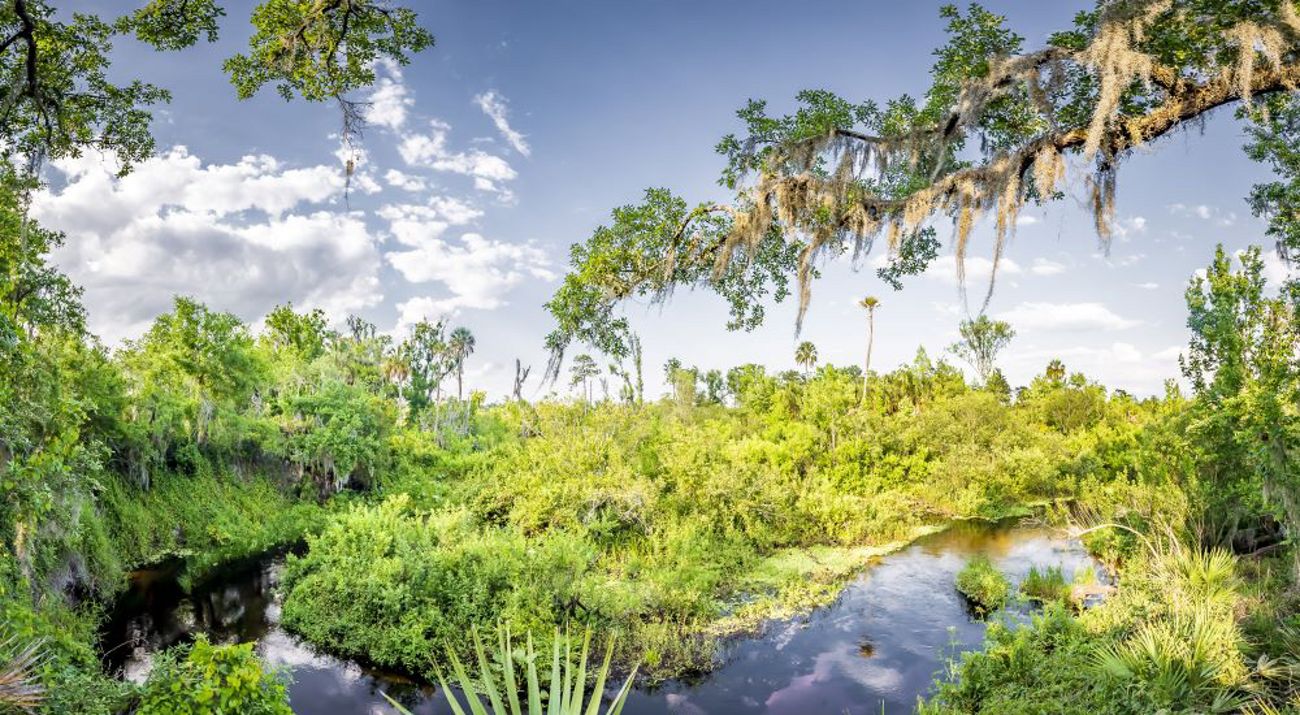
To achieve our mission, we need people power.
At TNC's Center for Conservation Initiatives (CCI) campus preserves, volunteers help out in ways big and small, expanding our impact locally and globally.
You too can turn your passion into action by volunteering at one of our Florida preserves, or find a remote position where you can work from anywhere.
Read some of our volunteers' stories and get inspired to put your talents to work at a preserve near you.
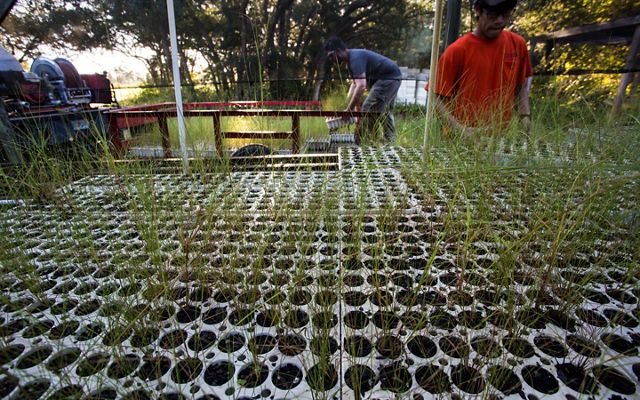
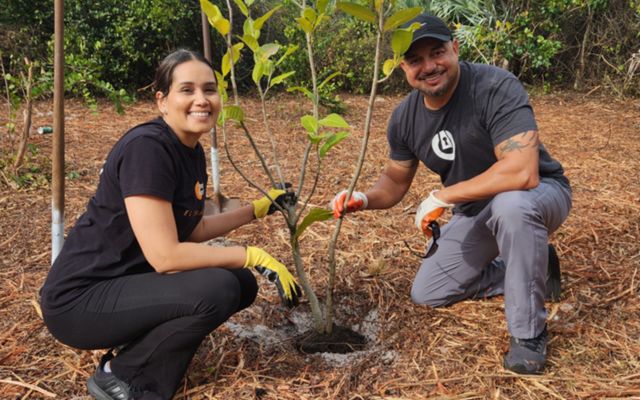
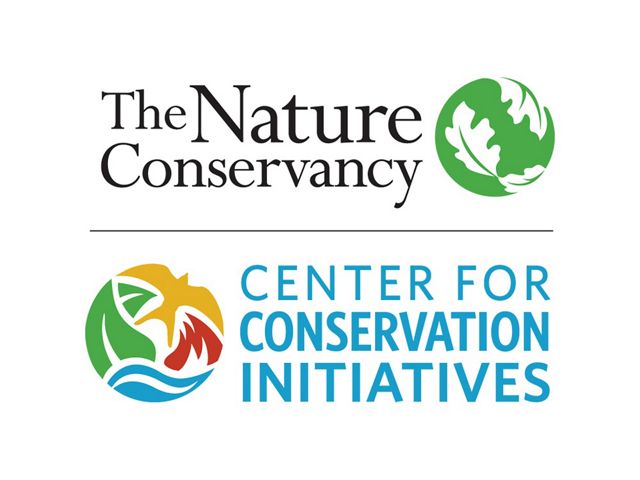
TNC Florida's Center for Conservation Initiatives advances conservation through education and training, outreach and volunteerism, science and research, and land stewardship. Learn more.
For the last 20 years, husband and wife team Kevin Kane and Diana Miller have captured an eagles-eye view of the wildlife that call our preserves home. The dynamic duo started their journey at Disney Wilderness Preserve doing wetland monitoring and have expanded their volunteer work to monitor wildlife at our other central Florida preserves. In the last 13 years, Kevin and Diana have served as EagleWatch volunteers, recording more than 100 hatched eaglets on TNC preserves. With camera in tow, they closely monitor and document all of our eagle nests, sharing data with our partners at Audubon. Audubon runs the EagleWatch program, training all volunteers and collecting and tracking data.
“It is important for a population of any plant or animal to be monitored in order to assess its continued success in an environment,” says Diana.
“Monitoring allows for an early alarm bell to sound as a population declines, so that corrective measures can be instituted to help curb that decline, if possible.”
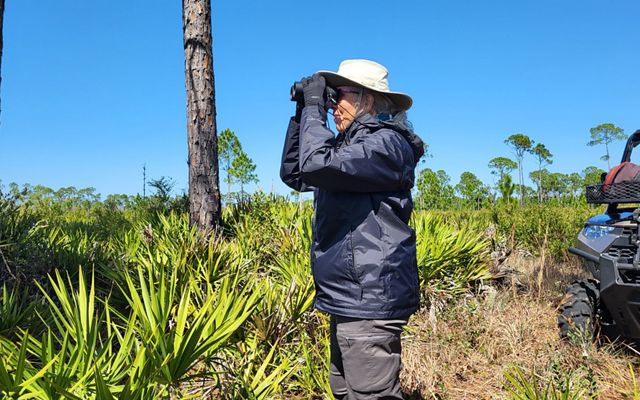
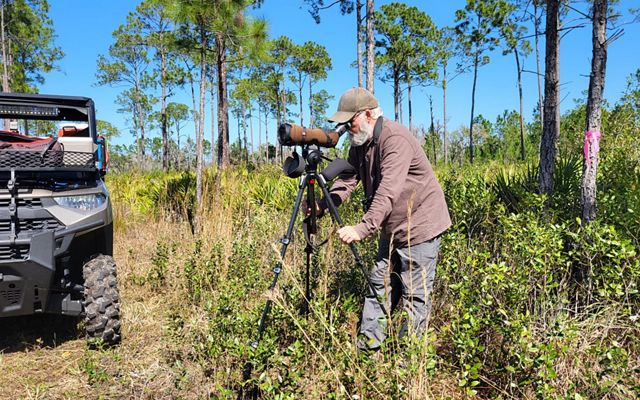
Starting in October, Kevin and Diana begin the monitoring season by visiting existing nests at TNC’s Disney Wilderness Preserve, Tiger Creek Preserve and Saddle Blanket Preserve.
Creatures of habit, eagles tend to use the same nest year after year--unless the nest has been claimed by other birds like great horned owls. In this case, the eagles will find an alternate nest, or fight the owl for its home. Kevin and Diana also keep an eye out for signs of new nests. The prime locations? Live pine trees near water with a reliable source of rodents and small birds nearby.
Bald eagle nests are usually about five feet wide and built of a foundation of sticks and the inside, called an eyrie, includes soft materials such as grasses, Spanish moss and other plant debris. To prepare for their clutch of eggs, a pair may add to their nest every year, expanding its width and depth.
While looking for nests, Kevin and Diana also keep their eyes to the skies, noting mating behavior. During their courtship ritual, a bald eagle pair locks talons mid-air in what’s called a cartwheel display. Bald eagles mate for life, and we note previously bonded pairs and potential new mates.
Next, through the winter and onto spring, Kevin and Diana methodically return to the nests every two weeks. They look for a variety of behaviors, depending on the rhythm of the typical laying and hatching cycle. First, they look for egg-laying behaviors, such as nest-building. Next, about 30 days later, Kevin and Diana will look for signs of hatched chicks and record the amount of hatchlings per nest.

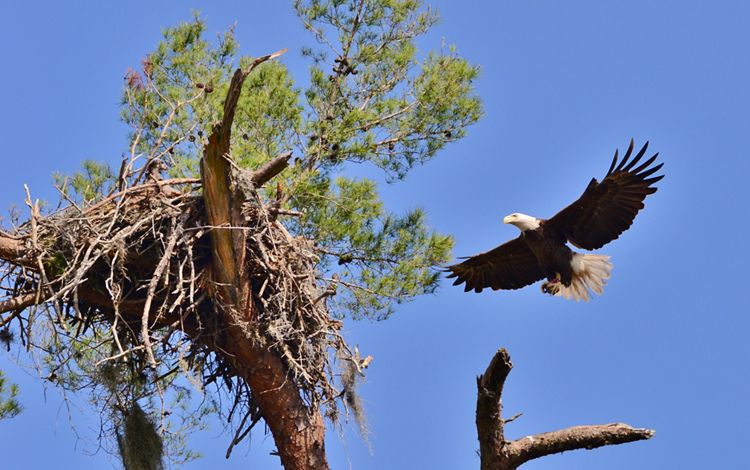


Bald eagles will lay one to three eggs per clutch, hatching about 35 days after being laid. The pair will incubate the eggs together, taking turns sitting on the eggs while the other partner hunts. As the eggs reach hatching time, Kevin and Diana will visit nests in hopes of capturing photos of the small, gray chicks. Then, Kevin and Diana will take on the rewarding duty of watching the chicks grow. While innocent from afar, chicks are aggressive as they compete with each other for food
The chicks grow quickly, gaining more than a half-pound a week for the first 10 weeks of life. Then, between 10-12 weeks, they’ll “branch” or start hoping from branch to branch surrounding their nest. This branching behavior alerts eagle monitors like Kevin and Diana that the eaglets will soon fledge, or take its first flight from the nest.
Kevin and Diana’s bald eagle monitoring season will run until May, following the eaglets fledging and first few weeks of independence.
In the winter, Diana also participates in Christmas Bird Count events at TNC’s Disney Wilderness Preserve and Tiger Creek Preserve. In the summer, Kevin and Diana support our yearly red-cockaded woodpecker monitoring efforts, butterfly count and Florida scrub jay surveys.
Their wildlife knowledge and experience, paired with their exemplary birdwatching and photography skills, make them an essential asset to The Nature Conservancy volunteer team.
Make a difference with the Center for Conservation Initiatives
Sign Up for CCI News Blasts
Volunteers join TNC to remove non-native, invasive natal grass at Tiger Creek Preserve.
On a crisp January morning, TNC’s Tiger Creek Preserve (TCP) manager Cheryl Millett got a call. It was a nursery partner who had an extra order of 5,000 longleaf pine seedlings in need of a home.
Thanks to a methodical prescribed fire and strong volunteer program, TNC was able to jump-start 100 acres of planned longleaf habitat restoration. The race to plant the seedlings within two weeks of delivery—the best way to ensure survival and success—was on.
TCP volunteers stood at the ready. Stewardship staff quickly identified the most ideal locations for the seedlings, determining that they’d most likely thrive on four units burned in the past year.
How does a team plant 5,000 seedlings? With partners, tools and on-the-clock coordination.
We borrowed tools called dibblers from the neighboring Lake Wales Ridge State Forest and rallied other local partners like the FWC Ridge Rangers, who eagerly joined us in the race to plant the seedlings. One team staged the seedlings, while another continuously watered them. Using the dibblers, volunteers created an opening, inserted a seed plug, compressed the soil and kept moving.
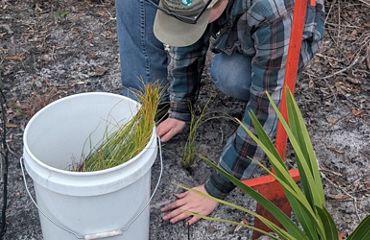
It was all hands on deck. We planted rain or shine.
Not only did we meet our two-week goal, but all the seedlings were planted in six days. Twenty-two volunteers and 160 hours later, the newly planted longleaf pines are thriving and have matured to the grass stage. Volunteers continue to monitor each young tree, watering them during central Florida’s dry season.
“These are long-lived trees,” says Cheryl, reflecting on volunteers’ passion for longleaf pine. “We’re planting something that’s going to mature in 80 years. It’s a legacy project. We are growing the future.”
It is this passion, strong partnerships and coordinated, science-based restoration that help bring back longleaf pine to the southeast. This iconic giant once towered over millions of acres but has now been reduced to less than 5% of its historic range. Longleaf pine are key to protecting other species we cherish, including gopher tortoises, red-cockaded woodpeckers and eastern indigo snakes.
Together, one seedling at a time, TNC and our partners are making a difference for nature.
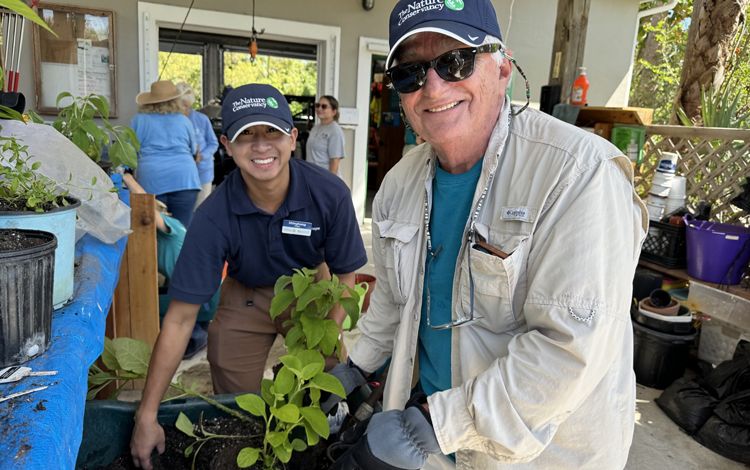
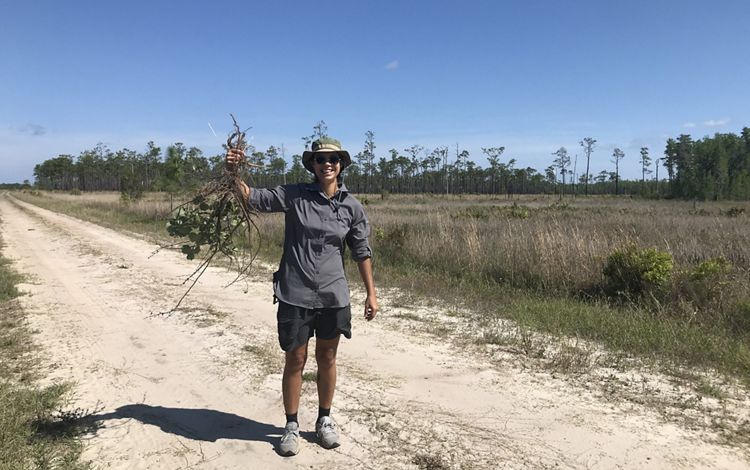
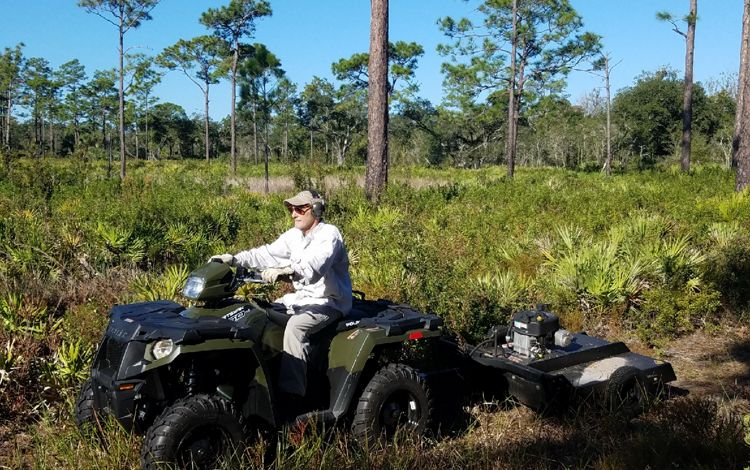
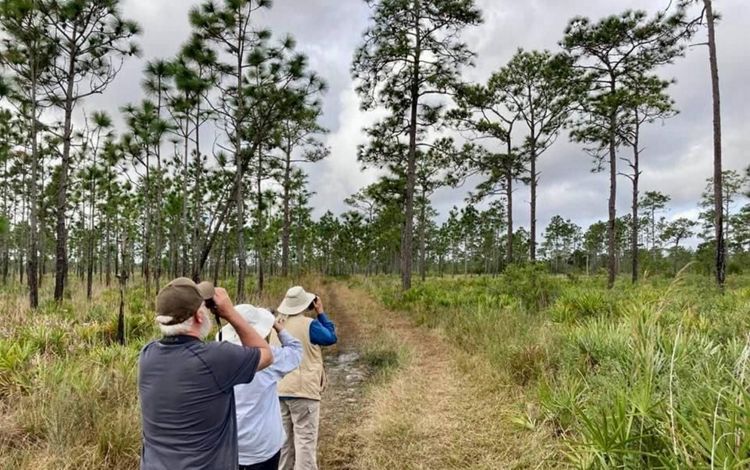
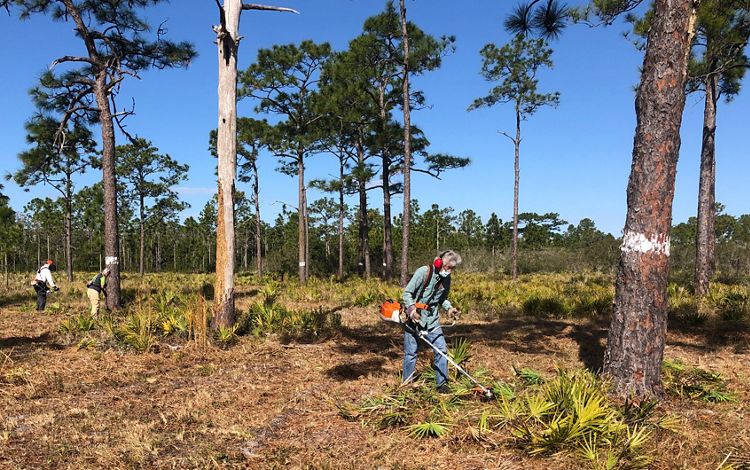
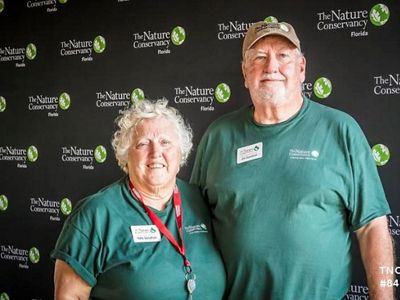
Tiger Creek Preserve workcamper volunteers celebrate 15 years of service.
Jim Goodhart is a mechanic by trade, and at the preserve he is a do-it-all handyman. From fixing vehicles and equipment to learning woodworking skills, he is more than just Mr. Fix It, but a trusted source of knowledge for TNC staff.
“It feels good to be called upon for advice and input," says Jim. “I feel my skillsets are valuable to the team.”
Patty Goodhart joins Jim, putting in hard work on our restoration and recreation efforts.
“I pull invasives—I love that—and I’m always on the lookout,” says Patty, also known as the Rattlebox Queen. She specializes in treating invasive plant species, like rattlebox and natal grass. She also helps with trail maintenance and educational events, ensuring a welcoming visitor experience.
Both Jim and Patty know that their legacy is not only in the everyday tasks they do, but also in the people they meet along the way. They pass on their knowledge to new preserve staff, sharing their experienced insight on how the preserve works and tasks that need to be done. Jim teaches stewards how to fix their tools, and Patty trains new volunteers as they come on board.
For Jim and Patty, it’s the people that make Tiger Creek Preserve special. “That’s what keeps us coming back,” says Patty. “I think The Nature Conservancy depends on volunteers. We are a part of this future.”
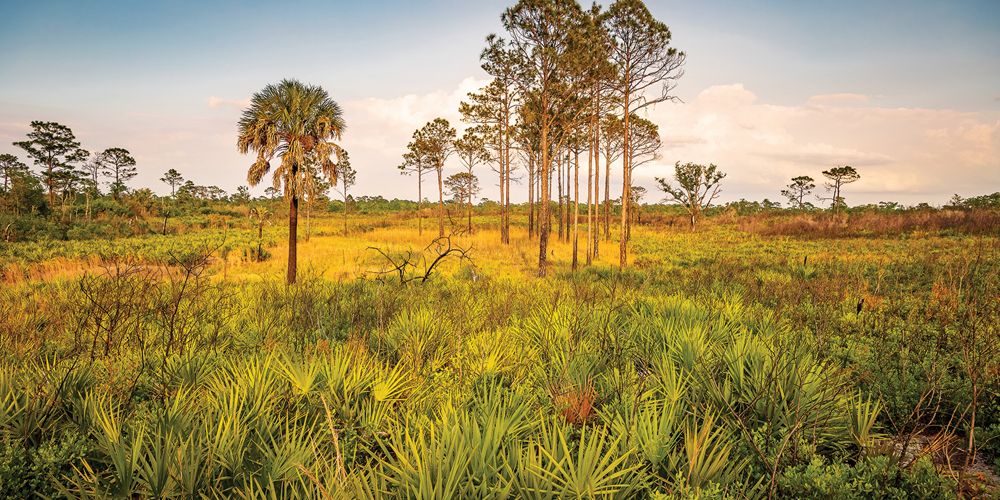
Read about our preserves and those who protect them.